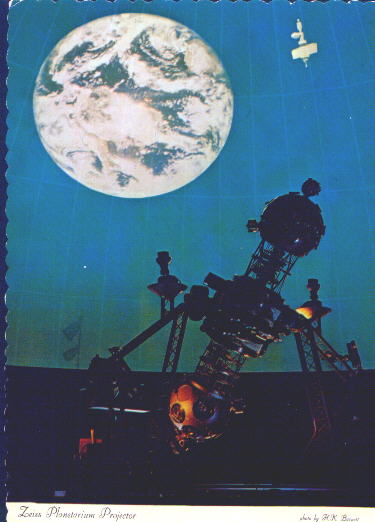
(Image Source: NASA)
By Glenn A. Walsh
Reporting for SpaceWatchtower
The Full Moon of March arrives on Sunday Afternoon (2014 March 16), the day after the "Ides of March," at 1:08 p.m. EDT (17:08 Coordinated Universal Time). This month's Full Moon will be accompanied by a video web-cast of a very recent asteroid impact site in the Mare Nubium basin region of the Moon.
The Slooh On-Line Telescope web site will sponsor this video web-cast, which will show the site where the brightest asteroid strike on the Moon was ever discovered, which occurred last year. On 2013 September 11, an asteroid, traveling approximately 37,900 miles-per-hour, slammed into the Moon at Mare Nubium. The asteroid, estimated at 2-to-4.5 feet across, created a new crater on the Moon about 131 feet wide. Discovery of the new crater, and how it was formed, was announced on February 24.
Such a small asteroid striking the Earth would have had no risk to people on the ground, as it would have burned-up in the atmosphere as a brilliant fireball. The Moon, with an extremely minimal atmosphere (known as an exosphere), does not have the protection our atmosphere gives us for small meteors and asteroids. Hence, future lunar bases would have to be prepared for such unwanted visitors, no matter how small.
The Slooh video web-cast begins March 16 at 9:00 p.m. EDT (March 17, 1:00 Coordinated Universal Time): Link >>> http://events.slooh.com/
The March Full Moon is known as the Worm Moon, the time of year when the ground softens from the long Winter, allowing Earth Worms to appear quickly followed by Robins. This month's Full Moon is also known as the:
* Sap Moon - when maple sap begins to flow, allowing the successful tapping of maple trees in the new year to begin.
* Crow Moon - for the cawing crows which signal the end of Winter.
* Crust Moon - for crusted snow created by the repeated thawing and freezing of snow and ice.
* Lenten Moon - to early American settlers it was known as the last Full Moon of Winter.
Some Native Americans also knew the March Full Moon as the Wind Moon, Little Grass Moon, and Sore-Eye Moon.
In the Southern Hemisphere, the March Full Moon is known as the Harvest Moon and the Corn Moon.
While the Vernal Equinox does not occur until March 20 at 12:57 p.m. (16:57 Coordinated Universal Time), the real equinox actually occurs the day after the Full Moon, on March 17, which is also St. Patrick's Day. In Latin, "equinox" is defined as "equal-night," the day when daylight and darkness are about equal in length.
Such actual equal-night never occurs on the actual date of an equinox on Earth. This is due to the fact that the Sun is so large, in relation to the Earth, and, hence, the entire Sun does not appear at actual sunrise, only a portion of the Sun; it takes a few more minutes for the entire Sun to appear above the horizon. Also, due to the refractive nature of Earth's atmosphere, daylight can be seen before the Sun's disk can be observed.
The date of actual equal-night varies by a location's longitude and latitude. At the Earth's Equator, daytime is always longer than night. Hence, the Equator never has equal-night.
In Pittsburgh, equal-night occurs on March 17, when sunrise is 7:28 a.m. EDT (11:28 Coordinated Universal Time) and sunset will be 7:29 p.m. EDT (23:29 Coordinated Universal Time).
More on the Full Moon: Link >>> http://en.wikipedia.org/wiki/Full_moon
More on Full Moon names ---
Link 1 >>> http://earthsky.org/astronomy-essentials/full-moon-names
Link 2 >>> http://en.wikipedia.org/wiki/Full_moon#Harvest_and_Hunter.27s_moons
Link 3 >>> http://www.farmersalmanac.com/full-moon-names/
More on the Equinox: Link >>> http://en.wikipedia.org/wiki/Equinox
More on the Ides of March: Link >>> http://en.wikipedia.org/wiki/Ides_of_march
Source: Glenn A. Walsh Reporting for SpaceWatchtower, a project of Friend of the Zeiss.
2014: 75th Year of Pittsburgh's Buhl Planetarium

Want to receive SpaceWatchtower blog posts in your inbox ?
Send request to < spacewatchtower@planetarium.cc >..
gaw
Glenn A. Walsh, Project Director,
Friends of the Zeiss < http://buhlplanetarium.tripod.com/fotz/ >
Electronic Mail - < gawalsh@planetarium.cc >
About the SpaceWatchtower Editor / Author: < http://buhlplanetarium2.tripod.com/weblog/spacewatchtower/gaw/ >
SpaceWatchtower Blog: < http://spacewatchtower.blogspot.com/ >
Also see: South Hills Backyard Astronomers Blog: < http://shbastronomers.blogspot.com/ >
Barnestormin: Writing, Essays, Pgh. News, & More: < http://www.barnestormin.blogspot.com/ >
SPACE & SCIENCE NEWS, ASTRONOMICAL CALENDAR:
< http://buhlplanetarium.tripod.
Twitter: < https://twitter.com/spacewatchtower >
Facebook: < http://www.facebook.com/pages/
Author of History Web Sites on the Internet --
* Buhl Planetarium, Pittsburgh:
< http://www.planetarium.
* Adler Planetarium, Chicago:
< http://adlerplanetarium.
* Astronomer, Educator, Optician John A. Brashear:
< http://johnbrashear.tripod.com >
* Andrew Carnegie & Carnegie Libraries:
< http://www.andrewcarnegie.
* Civil War Museum of Andrew Carnegie Free Library:
< http://garespypost.tripod.com >
* Duquesne Incline cable-car railway, Pittsburgh:
< http://inclinedplane.tripod.
* Public Transit:
< http://andrewcarnegie2.tripod.
No comments:
Post a Comment